WordPress plugins are like apps on your phone. You can download or purchase them to add or enhance the functionality of your WordPress website.
Plugins allow WordPress users to create powerful sites without touching a single line of code. As content management systems continue to democratize web design and abate the dependency on web developers and designers, plugins are an increasingly integral part of how we create and consume content on the internet.
This post will give you an overview of what WordPress plugins are, how they work, and some of the most popular examples.
Plugins can make small tweaks on your site or massive changes, depending on their features. For example, you could use a plugin to add a WhatsApp share button to your site or to create a fully multilingual site. Or, if you run an ecommerce business, you might install a plugin to assist with payment gateways or allow visitors to book appointments online.
There are also plugins that can help you enhance your contact forms, make beautiful sliders, backup your site in case of data failure, and make email opt-in easy — plus much more.
While many make changes to the front end of your site, some plugins make changes on the back end so maintenance is easier for your team. These plugins might allow you to scan your site for broken links, run A/B tests, or put your site into maintenance mode, for example.
Now that we have a better understanding of what plugins are, let’s take a closer look at how they work.
A plugin developer who wants to use the WordPress Plugin API to create a plugin will start by creating a PHP function to, say, delete comments with profanity from their site. Then they’ll hook the function to a specific event, such as saving comments to the WordPress database or publishing a post, by using the add_filter() function or add_action() function.
Let’s say this developer wants to create a plugin that adds a line of text that says “Thank you for reading!” below every post on a WordPress site. In that case, the function of the plugin would be adding “Thank you for reading!” to a post and the event that triggers the function would be publishing a post. So their plugin file would look something like the following:
<?php
/**
* Plugin Name: Thank You Plugin
* Plugin URI: http://www.mywebsite.com/thank-you-plugin
* Description: The very first plugin that I have ever created.
* Version: 1.0
* Author: Your Name
* Author URI: http://www.mywebsite.com
*/
add_action( 'the_content', 'my_thank_you_text' );
function my_thank_you_text ( $content ) {
return $content .= '<p>Thank you for reading!</p>';
?>
Now let’s say you’re a site owner who wants to add this functionality to your site. In that case, you'd need to add the plugin to your WordPress website. Let's look at the different ways you can do so below.
How to Use a Plugin in WordPress
There are multiple ways can add WordPress plugins to your site. For example, you can do so from your dashboard, from the official WordPress plugin directory, or from third-party sites. Plugins from the official directory can be automatically installed in one click, while some premium plugins have to be manually installed via a File Transfer Protocol (FTP) client.
To install a plugin from the official WordPress directory, you simply have to log into your dashboard and select Plugins > Add New. Then search for the plugin using the built-in search bar. From there, you just have to click Install and Activate.
To understand how to install a plugin that's not available in the official directory, let's return to the plugin example above. If the "Thank you for reading!" plugin is not available in the directory, then you would download the plugin as a zip file and save it in the wp-content/plugins folder of your directory via an FTP client. This would automatically install the plugin to your WordPress site.
You’d then navigate to Plugins in your admin dashboard. Once you located the newly uploaded plugin from the list of installed plugins on your site, you’d just click the plugin’s “Activate” link and be all set! From then on, every time you published a post, the line “Thanks for reading!” would be automatically added to the bottom of the post.
Most plugins begin working right away, but you may need to configure their settings to ensure they're working the way you want them to. For example, if you were using the WP Staging – DB & File Duplicator & Migration plugin to set up a WordPress staging site, then you'd need to go to the plugin's settings page and click Create New Staging Site. Then, enter in some information like the name of the staging site and what content you wanted to be copied. Otherwise, the plugin wouldn't up a staging site automatically.
If this sounds like a lot of work, then you might be wondering why people use plugins instead of editing core WordPress files to add functionality to their site. That’s because, when updating to a new version of WordPress, all the core files — and any edits made to them — are overwritten. To add that same functionality on your updated site, you’d have to go back in and edit the core files again.
However, if you install plugins to add functionality to your site, then you just need to worry about keeping the plugins updated.
Now that we understand what plugins are, how they work, and how to use them, let’s look at some plugins that can add essential features to your WordPress site.
Must-Have WordPress Plugins
WordPress offers essential standard functionality to get you publishing visual content as soon as possible to attract your target audience. However, it’s missing some key features to help you engage and delight these visitors. The must-have WordPress plugins below can help optimize your content, enhance your site or landing pages, advance your conversion strategy, and keep your visitors coming back.
1. HubSpot WordPress Plugin
HubSpot's drag-and-drop form builder allows you to easily build contact forms to use on your WordPress website — that automatically sync with the HubSpot CRM. The plugin also includes a pop-up creator, live chat and chatbot builder, email marketing, and more — all within WordPress.
HubSpot's WordPress Plugin is unique because it's an all-in-one plugin — it helps you stay efficient by keeping all of its features in a single location. Having a large number of plugins can slow down your website. But because HubSpot provides everything in one plugin, the tool keeps your site fast and responsive.
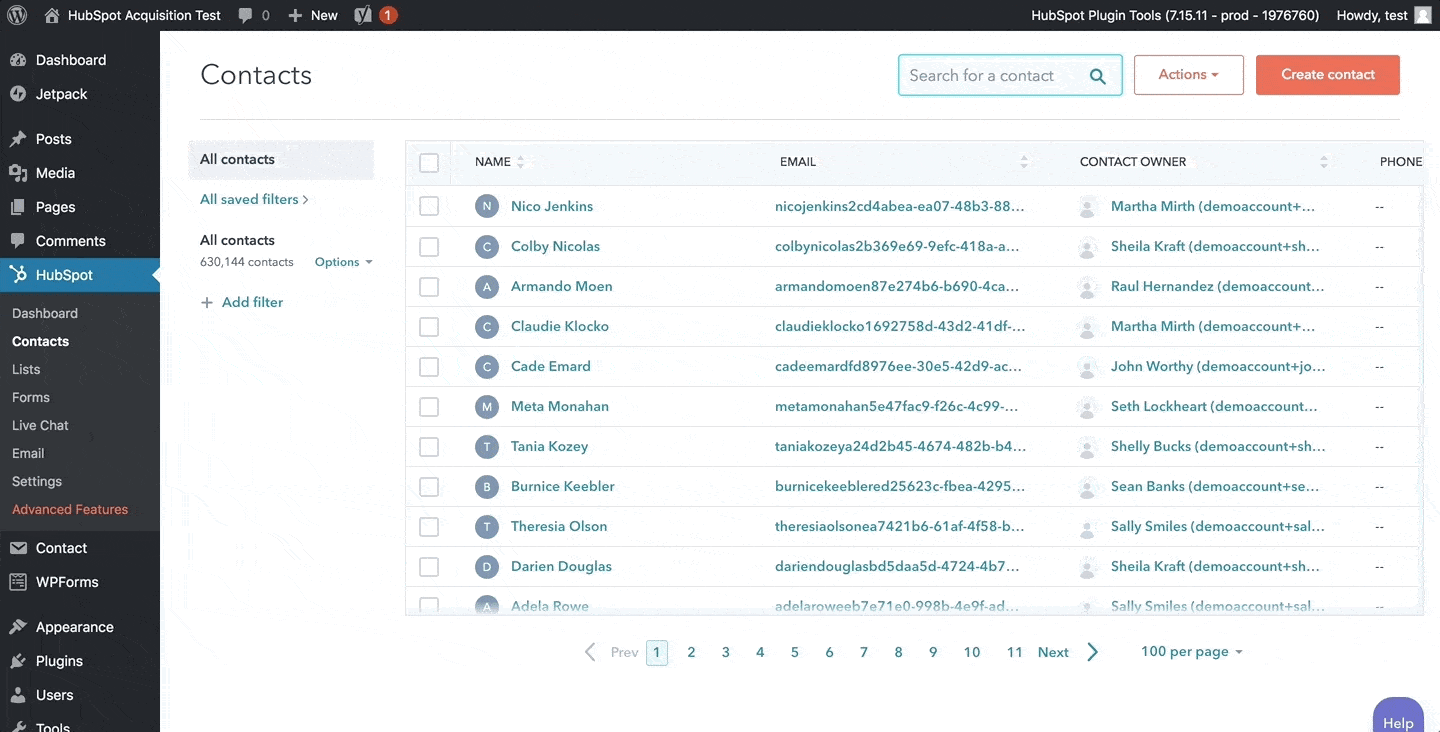
The plugin and its included features (CRM, Live Chat, Forms, Analytics, and Email Marketing) are free.
Paid HubSpot plans start at $50 per month and included additional functionality and features. As your business grows, you may need to build more custom reports or increase your ad spending, for example. In that case, you can check out HubSpot’s upgrade options.
2. All in One SEO
All in One SEO (AIOSEO) is a complete SEO plugin and toolkit for WordPress. Over 2,000,000+ professionals use this plugin to improve their website search ratings and unlock maximum traffic. You can start with the WordPress SEO setup wizard, which helps you automatically choose the best SEO settings for your specific website and industry.
And in less than 10 minutes, you can easily set up advanced SEO features such as XML sitemaps, optimized search appearance, SEO keywords, schema markup, and much more. Plus, the SEO audit checklist will analyze your entire website for errors and provide you with actionable insights to improve your on-page SEO.
AIOSEO offers a free and premium version of the plugin. The free plugin comes with everything you need to improve your site’s SEO. The premium versions include other powerful features like a redirection manager, 404 error tracking, and an image SEO module.

3. Yoast SEO
Merely creating and publishing quality content isn’t enough — you have to optimize it for search engines to rank and attract new visitors. The Yoast SEO plugin is specifically designed to help you improve your on-page SEO to drive more organic traffic to your site.
Whether you want to create a catchy SEO title, optimize your featured snippets, or rank for specific keywords, Yoast’s robust range of functionality, including a snippet preview, internal linking tool, and readability and SEO analysis, automates and simplifies the optimization process for you.
There’s a free and premium version of this plugin. The premium version unlocks even more features, including a redirect manager, automatic internal linking suggestions, and AI-powered features. With over 135 million downloads, Yoast SEO is the most downloaded SEO plugin out there.

4. WP Rocket
WP Rocket is a powerful caching plugin that offers a robust range of features, including cache preloading, removal of unused CSS, delayed JavaScript execution, and lazy loading, to speed up your WordPress site. What sets WP Rocket apart from other speed optimization plugins is that it begins working right out of the box once installed and activated on your site.
WP Rocket is a premium plugin with plans starting at $49 per month.
-1.webp?width=650&height=368&name=wordpress-plugins_16%20(1)-1.webp)
5. Wordfence Security
Wordfence is one of the most comprehensive WordPress security solutions available. It includes a malware scanner that quickly alerts you about security issues and an endpoint firewall to prevent attacks on your site. It also provides real-time visibility into traffic and hack attempts on your website and two-factor authentication, among a suite of additional features, to protect your site.
There’s a free and premium version. The premium version includes more features, including real-time firewall rule and malware signature updates and IP blacklists. With over 3 million active installations, Wordfence Security is the most popular WordPress firewall and security scanner.
-1.webp?width=600&height=450&name=wordpress-plugins_1%20(1)-1.webp)
6. Elementor
If you’re a non-coder, you can still create the WordPress site of your dreams by using a page builder plugin like Elementor.
Elementor is a visual drag-and-drop page builder with advanced design capabilities. With this page builder, you can choose from hundreds of templates and then customize them with Elementor’s mobile editing to create beautiful and responsive pages. Elementor comes with dozens of widgets so that you can easily add buttons, images, carousels, and headlines, among other elements, to your pages.
It’s free but you can upgrade to the premium plan for more templates, widgets, animation effects, and more.

7. Userlike
Userlike is the leading software for live chat, customer messaging, and service automation. Their WordPress plugin offers a free live chat plugin to connect with customers via website chat and important messaging apps such as WhatsApp, Instagram, Facebook, Telegram, and SMS.
Conversations from all channels land in one central inbox, the Userlike Message Center. From here, agents can quickly answer with text or voice messages, forward chats, and manage them with professional service features such as file sharing, live translations, canned messages, and more.
Userlike’s website chat plugin is optimized for lead generation and support throughout the buyer’s journey. Customers can chat in real-time or continue the conversation days or weeks later right on your website, just like a messaging app.

To automate your customer service, Userlike allows you to create AI-powered chatbots, FAQ pages, and contact forms. All automation features are connected to a central knowledge base that learns and improves its accuracy over time.
8. UpdraftPlus
With UpdraftPlus, you’ll never have to worry about manual back-ups again. You can use this tool to back-up your files directly to Dropbox or Google Drive, among other cloud platforms, and restore them with a single click. That means if the day comes when your site gets hacked, your server crashes, or something goes wrong with an update, you know your website — plus all its related files and databases — are safe.
There’s a free and premium version available. UpdraftPlus Premium unlocks even more cloud storage options, including OneDrive and Azure, and comes with more features, including incremental backups and database encryption. With over two million active installs, it is the most popular scheduled backup plugin.
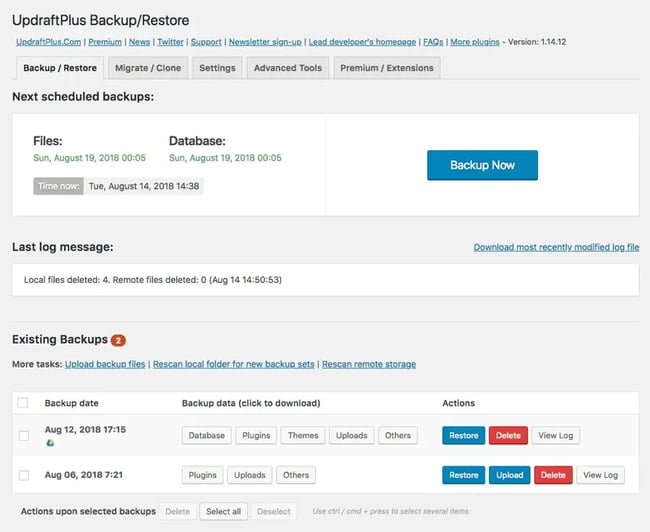
If you only install these six plugins, you’ll be in good shape. These tools will help you improve your site’s lead generation, SEO, design, security, and speed.
However, if you have the time and resources to manage more plugins, then you can continue to extend the functionality of your site to better meet the needs of your visitors and back-end users. Let’s check out some of the most popular plugins below.
Best WordPress Plugins
Some WordPress users wonder if there’s such a thing as installing “too many” plugins on their site. The truth is that your site’s performance depends more on the quality than on the quantity of plugins on your site. If they don’t follow WordPress’s coding standards or aren’t regularly updated, then they can slow down or even break your site.
Rather than try to stay below some arbitrary number, just make sure every plugin you install adds a feature that enhances the visitor experience on your site and isn’t just cool.
Below we’ll look at some of the most downloaded and highly rated plugins in the market. From optimizing images to integrating advanced analytics, each can add valuable functionality to your site.
9. MonsterInsights
MonsterInsights created this plugin to make it easy to connect your WordPress site with Google Analytics. Before this plugin, you had to either hire a developer or learn to add Google Analytics code in various different areas of your WordPress theme to set up this integration. With MonsterInsights, you can set up Google Analytics right inside your WordPress dashboard without a developer or any code required.
There is a free version of the plugin that will provide you with all of the basic tracking features you need. But, the premium version offers even more powerful insights such as data on top landing pages, popular products, form conversions, and much more. It also comes with a built-in headline analyzer so you can write effective SEO headlines that drive traffic and clicks.
MonsterInsights seamlessly integrates with Universal Analytics and Google Analytics 4. You can connect to whichever version you’re running, or connect to both at the same time using the dual tracking feature.
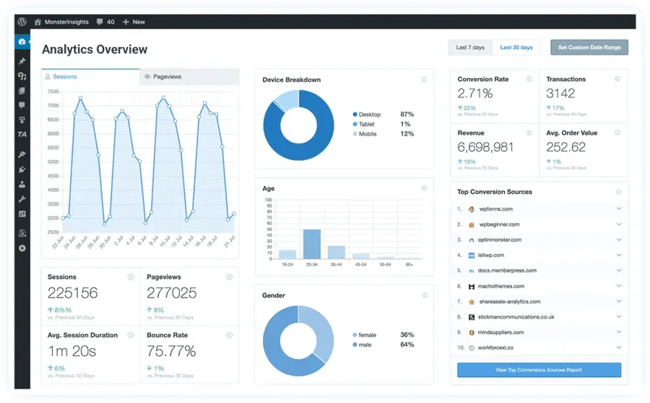
10. Jetpack plugin
If you want to install as few plugins as possible, start with Jetpack. Jetpack is a powerful all-in-one plugin that helps your site with traffic generation, SEO, security, site backups, content creation, and community building and engagement. With this tool, you can see your site stats at a glance, automatically share new posts to social media, protect your site from brute force attacks, and more.

With over 53 million downloads, Jetpack is the second most popular plugin of all time. There’s a free version, but you can upgrade to a Personal, Professional or Premium membership.
11. Smush
Smush is WPMU DEV’s image optimization plugin for WordPress. You can optimize every image you’ve ever added to your site with one-click (as long as they’re 5MB or less in size). Since image files tend to be bloated with data that isn’t needed, optimizing and compressing your site’s images with Smush is an effective and easy way to speed up your site.
Smush is free to download from the WordPress directory. There is a pro version available for those looking to optimize an unlimited number of images up to 32MB. WP Smush Pro plans start at $7 per month.
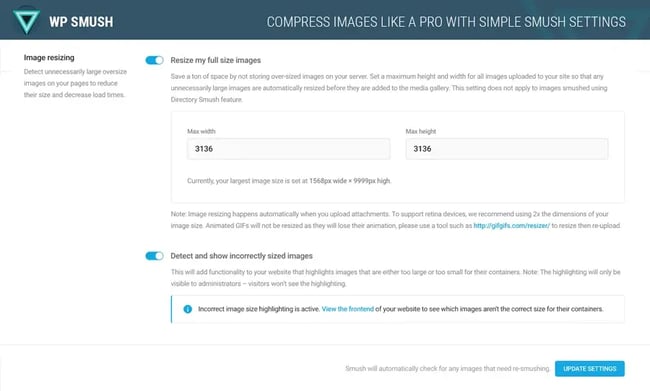
12. Akismet Anti-Spam
Akismet Anti-Spam offers excellent spam protection for your WordPress site. By checking comments and contact form submissions against a spam database, this tool prevents your website from publishing malicious content. That way, you’re only responding to your loyal readers and not spambots.
This plugin is free, though you can upgrade to premium plans starting at $5 per month for advanced stats and priority support. With more than 82 million downloads, Akismet is the most popular plugin of all time.

13. Monarch plugin
Monarch is a premium WordPress plugin that can help you increase your social shares and followers. With this tool, you can create a custom set of social media share buttons and follow buttons. In addition to letting you choose from dozens of social networks and profiles, it also offers many options for the placement and design of your buttons.
This plugin also provides an overview of your social media performance. In the Monarch dashboard, you’ll find your all-time stats (total number of shares, follows, and likes); your day, week, month, and year stats; your highest performing posts; and individual post stats.
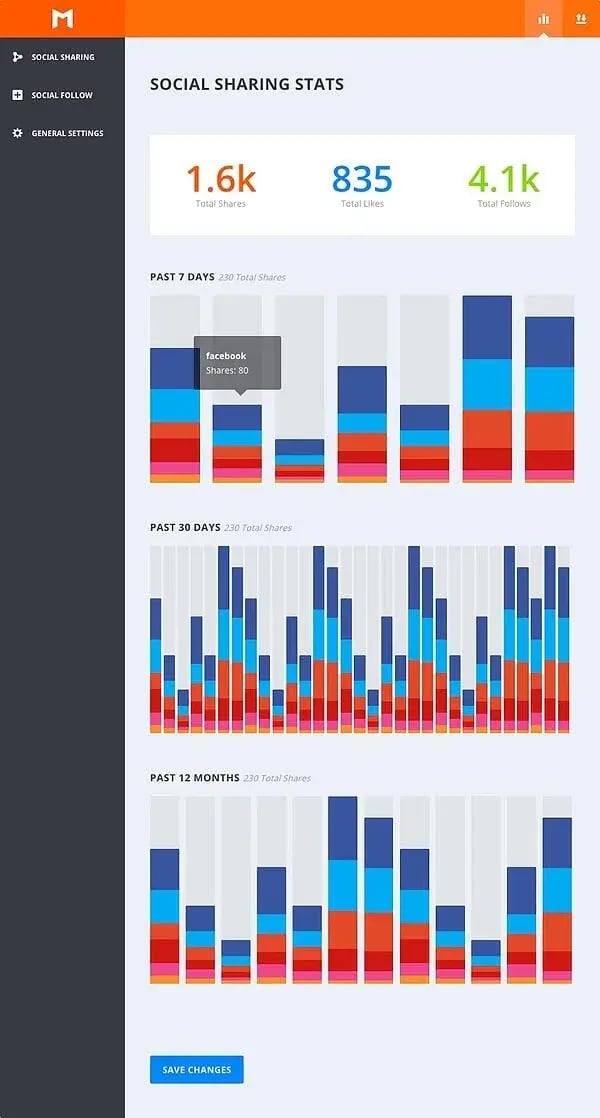
To use Monarch as well as a suite of other tools by Elegant Themes, you’ll have to purchase a membership for $89 per year or lifetime access for one-time fee of $249.
14. LifterLMS
Let’s say you want to add or sell online courses on your WordPress site. In that case, you’d use a learning management system (LMS) plugin like LifterLMS.
LifterLMS lets you manage all aspects of your online courses — from administration to documentation to reporting — right within your WordPress dashboard. With this tool, you can create an unlimited number of courses, generate coupons, incorporate quizzes into your curriculum, and keep track of everything from refunds to membership orders.
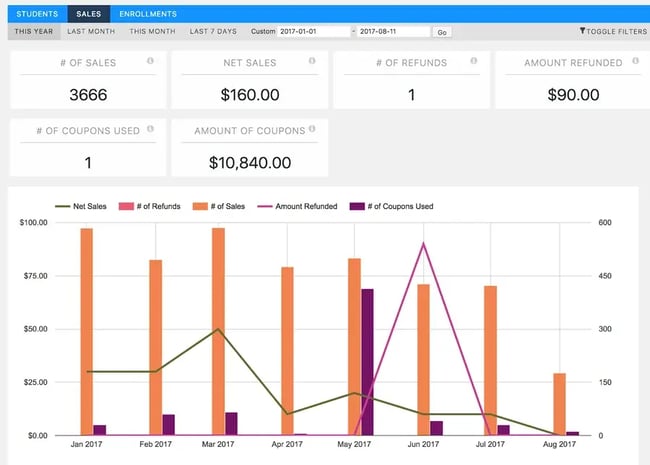
The core plugin is free, but you can add more functionality by purchasing individual add-ons or bundles of add-ons.
15. ThirstyAffiliates
If you are looking to monetize your site with affiliate links while building trust with your audience, you’ll want to consider installing an affiliate link management plugin like ThirstyAffiliates. With ThirstyAffiliates, you can cloak your affiliate links with a few clicks of your mouse. You can also manage, categorize, and customize these links right in your WordPress dashboard.
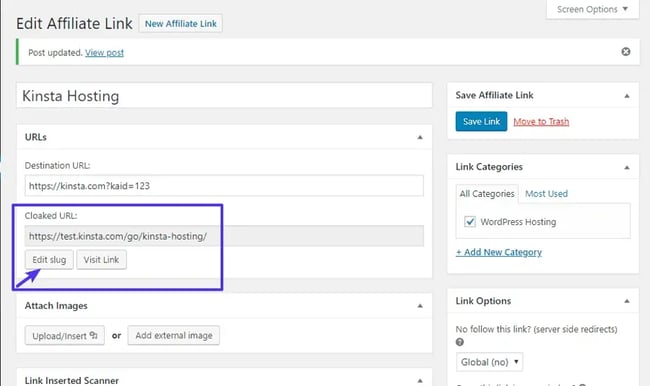
ThirstyAffiliates has a free and pro version with more advanced features, including link scheduling and URL shortening. Paid plans start at $49 per month.
16. Envira Gallery
Envira Gallery helps you create responsive photo and video galleries for your WordPress site. You can organize your photos into albums, display your image thumbnails on multiple pages, and share your images on social media networks — all without any coding.
There’s a lite version of the plugin available for free in the WordPress directory. Premium plans start at $29 and include advanced features for creating dedicated gallery pages, importing images from a Dropbox account, and more.
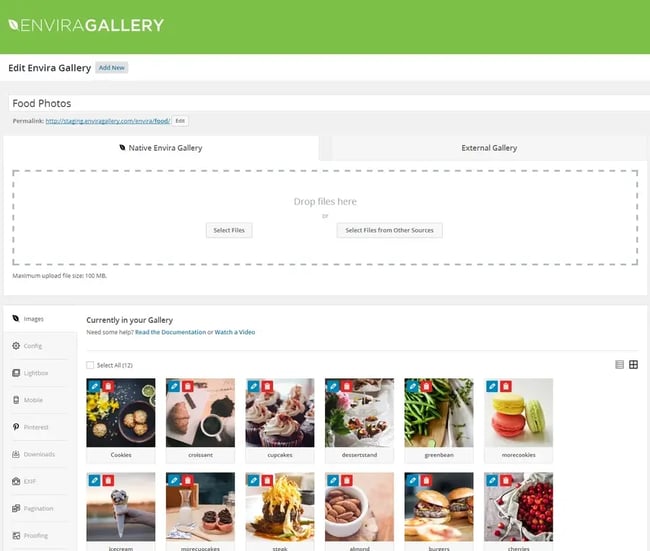
We’ve discussed many freemium and premium plugins. Now we’ll look at some free plugins you can download to meet specific needs on your site without spending more of your budget.
Free WordPress Plugins
Let’s say you’re just taking your business online and want to keep costs low. The good news is that there are over 55,000 free plugins that you can download from the WordPress directory to customize your site.
However, because free plugins do not come with warranties or guaranteed support, make sure that a plugin has been recently updated and has good reviews before installing it on your site. Below let’s look at a some highly-rated free plugins.
17. WooCommerce
WooCommerce is a flexible plugin that enables you to set up an ecommerce store in minutes. With this tool, you can easily create product, cart, and checkout pages. You can also accept a variety of payment methods and offer different shipping options, including free and flat rate shipping.
WooCommerce also comes with built-in sorting options and taxonomies so that customers can filter products by price, newness, popularity, ratings, categories, tags, and other attributes to find exactly what they're looking for.
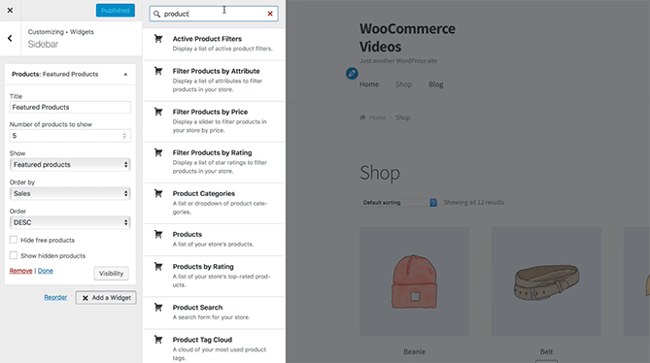
18. Google XML Sitemaps
Using a sitemap plugin will help ensure your posts get indexed faster by Google, Bing, Yahoo, and other major search engines.
Because Google XML Sitemaps supports all page types and custom URLs, you can use this plugin to create special XML sitemaps that help search engine crawlers understand the structure of your site and retrieve it more efficiently. Google XML Sitemaps allows you to set specific pages for priority indexation and automatically informs search engines about new posts and pages.
With more than one million downloads, this is one of the most popular sitemap plugins for WordPress.
.webp?width=650&height=440&name=Draft%20-%20What%20Are%20WordPress%20Plugins_%20(1).webp)
19. Redirection
If you run a WordPress site, you don’t want to risk losing visitors or damaging your site’s SEO because of broken links. Redirection is a free redirect plugin that can help you handle these errors without having to manually change them. With Redirection, you can easily create and manage 301 redirections and keep track of 404 errors.
With over one million active installations, Redirection is the most popular redirect manager for WordPress.
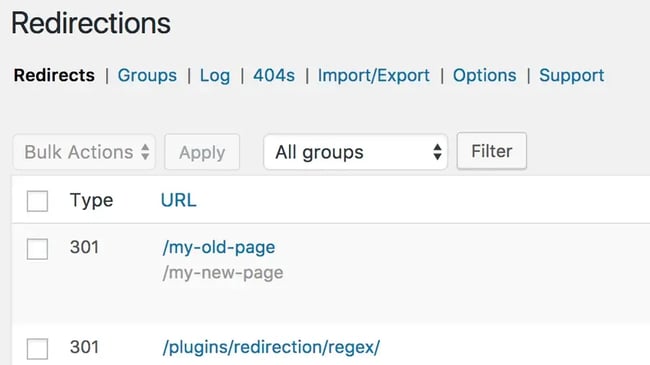
Enhance Your Site with Plugins
Whether you want to add forms to your site, automatically compress and reduce your images, or monitor your traffic for suspicious activity, plugins can add or extend the functionality of your WordPress site. This can help you anticipate and meet the needs of your consumers today and in the future.
Editor's note: This post was originally published in March 2020 and has been updated for comprehensiveness.
WordPress Plugins








